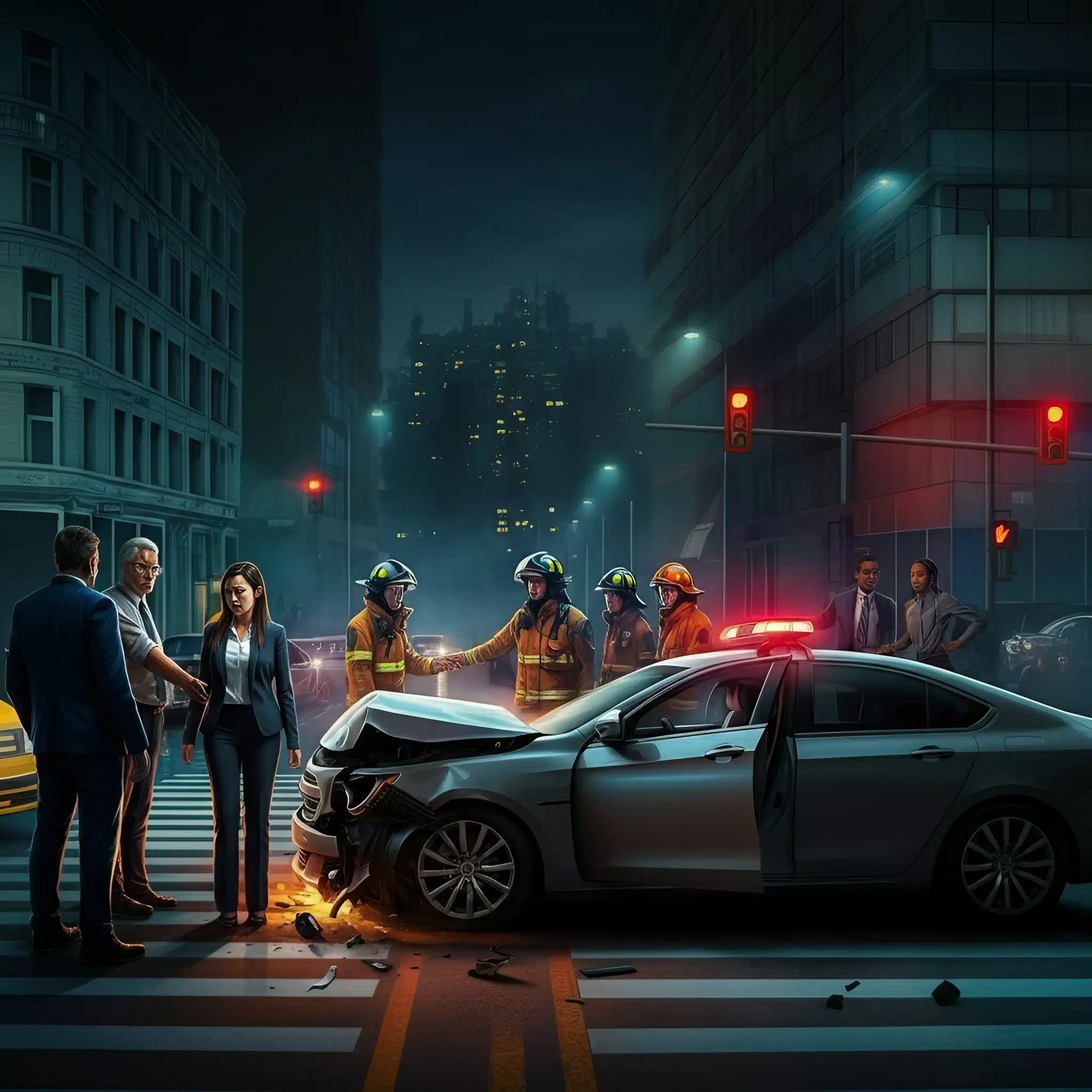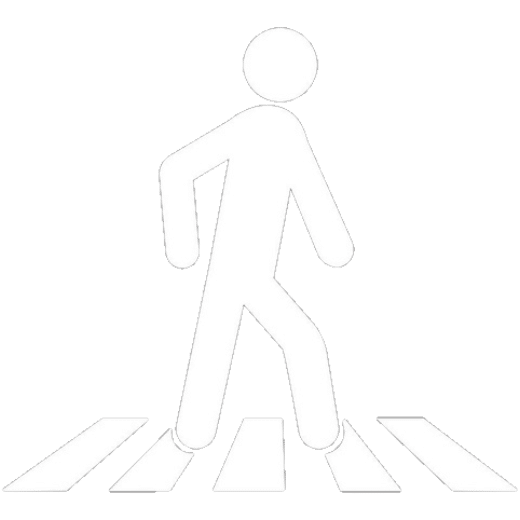Ride-sharing services like Uber and Lyft have transformed the way we travel by offering convenience at the tap of a button. However, with this new mode of transport comes unique risks, including accidents that may cause injuries and damages. When things go wrong during a ride-share trip, it’s crucial to know your rights as a passenger, pedestrian, or even as another driver.
This blog will guide you through the key steps to take after a ride-sharing accident, explain how liability is established, and provide insights on seeking fair compensation. Whether you’re a daily ride-share user or a one-time passenger, understanding your legal options is a vital part of protecting your rights.
Common Injuries and Damages in Ride-Sharing Accidents
Accidents involving ride-share vehicles can result in a wide range of injuries and damages. From minor to severe, here are some common examples:
Physical Injuries
- Whiplash: Sudden stops or collisions may result in neck injuries, commonly affecting passengers seated in the back.
- Broken Bones: High-impact accidents can leave passengers or pedestrians with fractured arms, legs, or collarbones.
- Head Injuries: Concussions or traumatic brain injuries (TBI) can result from direct impact or sudden jerks in moving vehicles.
- Soft Tissue Injuries: Sprains, bruises, or back pain are frequent injuries in ride-sharing accidents.
Emotional and Financial Damages
- Medical Expenses: Costs for doctor visits, surgeries, and hospital stays can add up quickly.
- Lost Wages: An injury could prevent you from working, resulting in lost income during recovery.
- Mental Distress: Anxiety, depression, or PTSD are common after traumatic accidents.
- Property Damage: Passengers or other motorists may incur damage to belongings, such as electronics, vehicles, or personal items.
For example, in one notable case, a ride-share passenger sustained a broken ankle after a negligent driver ran a red light. The passenger successfully received compensation covering her medical bills and income loss during her six-week recovery.
Establishing Liability: Who Is Responsible?
Determining who is at fault in a ride-sharing accident can be complex. Liability often depends on the circumstances of the accident. Here’s a breakdown of who may be held responsible:
The Ride-Share Driver
If the driver was negligent, such as speeding or texting while driving, they might bear direct responsibility for the accident.
The Ride-Sharing Company
Companies like Uber and Lyft typically offer liability insurance for their drivers. However, coverage details can vary depending on whether the driver was actively transporting a passenger, on their way to pick up a passenger, or offline.
- Active Trip: When a passenger is in the car, insurers may cover up to $1 million in damages.
- En Route: Limited coverage applies when the driver is en route to pick up a passenger.
- Offline: The driver’s personal auto insurance typically applies when they are offline.
Other Drivers or Pedestrians
Multi-vehicle accidents can involve multiple parties. For example, in the case of a multi-car collision involving a ride-share driver, liability may be shared among the ride-share driver, other motorists, or even external factors like poor road conditions.
Pedestrian Incidents
If a ride-share vehicle injures a pedestrian, the driver or ride-sharing company may be responsible. One case involved a pedestrian who was hit while crossing the street in a marked crosswalk. The injured party successfully filed a claim against the ride-share company’s insurer for medical expenses and emotional damages.
Steps to Take Immediately After a Ride-Sharing Accident
The moments following an accident are crucial for ensuring your safety and laying the groundwork for a successful compensation claim. Here’s a step-by-step guide:
- Ensure Safety: Move to a safe location if possible and check for injuries.
- Call Emergency Services: Contact 911 to report the accident, request medical assistance, and ensure an official police report is filed.
- Exchange Information: Collect contact and insurance details from all parties involved, including the ride-share driver.
- Document Everything: Take photos of the scene, including vehicle damage, injuries, license plates, and road conditions.
- Seek Medical Attention: Even if injuries seem minor, consult a healthcare professional as soon as possible.
- Notify the Ride-Sharing Company: Report the incident through the app to ensure their involvement.
Gathering Evidence to Support Your Claim
Strong evidence is key to building a successful claim for compensation. Here’s how you can collect and organize documentation:
- Accident Report: Obtain a copy of the police report, which includes official details about the incident.
- Photos and Videos: Visual evidence of injuries, vehicle damage, and the accident scene can support your claim.
- Medical Records: Keep copies of all medical documentation, including bills and physician notes.
- Witness Statements: Collect contact information and statements from witnesses who saw the accident.
- Communication Records: Save all correspondence with the ride-share company, driver, and insurance representatives.
For example, in a case where a ride-share passenger filed a claim against both the driver and the company, thorough documentation of faulty vehicle maintenance helped secure a fair settlement.
Navigating Insurance Companies and Settlements
Dealing with insurance companies can be intimidating. Here are some tips to help you negotiate a fair settlement:
- Understand Coverage: Learn about the insurance policies involved. Ride-sharing companies often have complex coverage structures, as outlined above.
- Don’t Settle Too Quickly: Insurers may offer low initial settlements. Review the offer carefully to ensure it covers your full medical costs, lost wages, and damages.
- Seek Legal Advice: A personal injury attorney can ensure you’re not taken advantage of during negotiations.
- Be Firm but Polite: Maintain professionalism and stick to the facts when communicating with insurance adjusters.
- Know Your Worth: Calculate the full extent of your damages, including future medical expenses and emotional distress.
For instance, a pedestrian who was initially offered a low settlement by the ride-share company’s insurer was able to secure higher compensation by hiring an attorney and providing extensive evidence.
Protect Your Rights with Legal Assistance
Navigating the aftermath of a ride-sharing accident can be overwhelming. Between medical appointments, insurance negotiations, and legal complexities, it’s easy to feel lost. That’s why seeking legal assistance can make all the difference.
An experienced personal injury lawyer specializes in addressing cases involving ride-sharing services. They can guide you through the claims process, handle negotiations with insurers, and ensure your rights are protected.
If you’ve been involved in a ride-sharing accident, don’t hesitate to take action. Understanding your options and gathering the right evidence will empower you to secure the compensation you deserve.





























